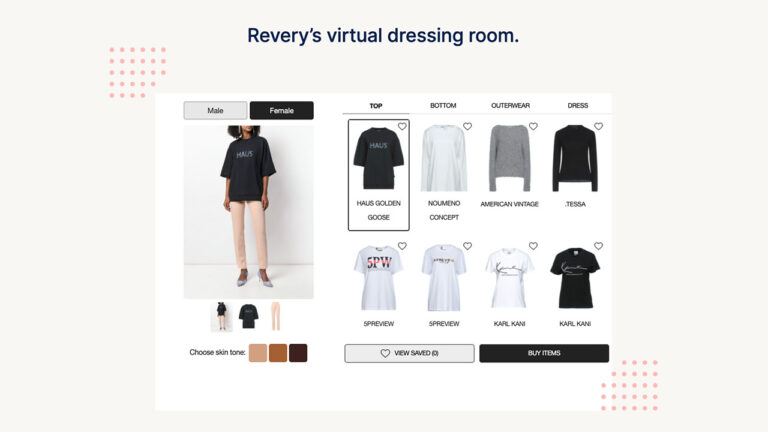 With the help of AI, a new fashion startup offers online retailers a scalable virtual dressing room, capable of cataloging over a million garment images weekly.
With the help of AI, a new fashion startup offers online retailers a scalable virtual dressing room, capable of cataloging over a million garment images weekly.
Combining a deep learning model with computer vision, Revery.ai is improving the online dressing room experience for both retailers and consumers. Creating a tool that uses existing shop catalog images to build a scalable virtual dressing room, the technology gives shoppers the power to try on a store’s entire inventory without leaving the house.
“The inspiration for creating Revery was really to tackle a problem that everyone faces when shopping online—how does this outfit actually look in person? The idea of a virtual dressing room is not new—from the movie Clueless to the spectacular failure of Boo.com—people have wanted virtual try-on since they could shop online,” said cofounder Jeffrey Zhang, a PhD candidate in fashion AI and computer vision at the University of Illinois.
Advised by David Forsyth—a Computer Science professor at the University of Illinois—Revery.ai cofounders also include two additional PhD candidates in fashion AI and computer vision, Kedan Li and Min Jin Chong.
According to Zhang, Revery overcomes the biggest virtual dressing room obstacle for most retail giants—scalability. The technology offers a comprehensive tool capable of processing over a million garment images weekly.
Revery makes this possible with a newly developed AI algorithm that employs the cuDNN-accelerated deep learning framework PyTorch and with NVIDIA RTX 3090 and RTX A6000 GPUs to both train and process the models. As the framework learns from millions of images, the system is able to capture and process nuances, such as how the garments fall, texture, logos, or even shading, providing realistic online versions of the garments.
“We have been privileged to get our hands on some of the latest generation GPUs, which have sped up our training substantially compared to previous generations. Furthermore, the increased memory size allows us to generate image resolutions of up to 1.5k,” Zhang said.
The technology not only saves time. It also stands to reduce the millions of dollars it would take to integrate a complete inventory, while offering retailers the ability to update stock quickly.
Online shopping has been on the rise, with consumers spending $861.12 billion with U.S. merchants in 2020. By year’s end, U.S. apparel e-commerce is projected to hit about $100 billion and the team is looking to expand with more online retailers.
They are also focused on creating more inclusive and diverse offerings for customers—something the fashion industry often lacks. The group is working on increasing personalization, by offering different body shapes, and adding mix and match options for bags and shoes. The current product offers shoppers the ability to customize gender, skin tone, hair, and even change poses of the models.
“Our long-term goal is to digitize every garment from any store and integrate with shoppers’ wardrobes to create an immersive online shopping experience,” Zhang said.
Read the study >>
Learn more about Revery.AI >>
